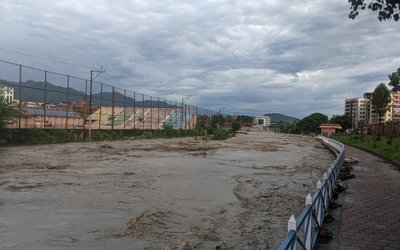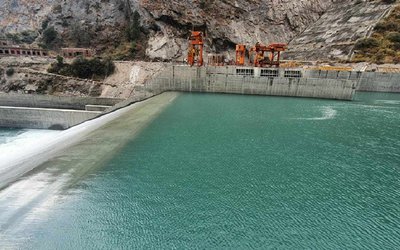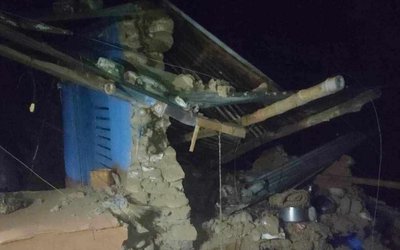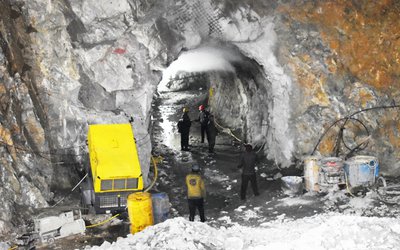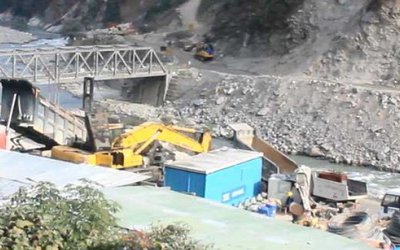
By Ankush Kumar
India annually imports around 1,200 Mw power from Bhutan, exports 1,200 Mw to Bangladesh, exports 450 Mw to Nepal and 3 Mw to Myanmar. India is also working on a plan to develop an under-sea cable for trade with Sri Lanka.
New Delhi: Cross-border electricity trade in the South-Asian region has the potential to grow to 60,000 Mw through 2045 with the likely strengthening of regional power cooperation among countries including India, Bhutan, Bangladesh, Nepal, Pakistan, Sri Lanka and Myanmar.
Currently, a mere 3,000 Mw of power is traded in the region among the seven countries which is likely to double by 2020, according to Integrated Research and Action for Development (IRADe), a Delhi-based independent research organisation, which recently conducted a study on cross-border electricity trade.
“If the Gross Domestic Product (GDP) of all the South Asian economies grows at 6.5 per cent till 2045 and they continue to cooperate like one region, the energy trade could go up to 60 Gw according to our analysis,” said Jyoti Parikh, Executive Director at IRADe.
India’s power trade with its neighbors is largely one-sided. The country annually imports around 1,200 mw power from Bhutan, exports 1,200 Mw to Bangladesh, exports 450 Mw to Nepal and 3 Mw to Myanmar. India is also working on a plan to develop an under-sea cable for trade with Sri Lanka.
Parikh said the cross-country electricity trade should be depoliticized and should be made market-based with cooperation between grid operators of different countries. “The lowest hanging fruit is the power exchange opportunities between India and Pakistan. Technically, it is very easy as demand centers exist on both the sides with cities like Amritsar and Lahore in close proximity to each other,” she said.
Pakistan has a large hydro potential of 59,000 Mw of which only 11 per cent is tapped. The country also has coal reserves of around 17 billion tonne and natural gas reserves of 33 Trillion Cubic Feet (TCF).
While India and Pakistan both have large capacities in coal and hydro, Bhutan and Nepal rely only on hydro-power for meeting their power demand. Bhutan has only tapped 6 per cent of its 30 Gw hydro power potential. A majority of its revenue comes from energy export to India.
Export to India contributes 27 per cent of Bhutan's revenue, according to Karma Tshewang, chief engineer, Department of Hydropower, Bhutan, “We have 8,000 households and almost all the houses are connected with the grid. Currently, we have 3,600 Mw of capacity under construction. Once that gets commissioned, there will be a huge jump in overall energy exports," he told ETEnergyworld.
Bhutan has an installed generation capacity of 1,606 Mw currently and exports around 70 per cent of its annual electricity production to India.
For Nepal, its overall electricity supply is inadequate to meet rising power demand and therefore the country relies on imported diesel. The Himalayan nation has a total hydro power potential of 83,000 Mw but only 770 Mw has been tapped so far. The current installed power generation capacity of Nepal is around 792 Mw out of which 734 MW ( 93 per cent) is generated from Hydro Resources and 53 Mw (7 per cent) is generated from thermal resources.
Nepal today imports 450 Mw power from India through 11 cross-border interconnection lines. “We have plans to further expand it to 400 Kv lines. We have identified additional eleven 400 Kv transmission interconnection points in the Nepal-India cross-border transmission plan," said Dinesh Kumar Shimiri, Joint Secretary, Ministry of Energy, Water Resources and Irrigation, Nepal.
Apart from the huge potential of hydro and coal reserves, South Asia is also rich in natural gas. In Bangladesh, natural gas contributes 78 per cent of its total power generation.
“Bangladesh has had tremendous success in the power sector in the last decade. We had generation capacity of less than 5,000 Mw in 2009 which has now increased to 20,000 Mw," said Mohammad Husain, director general, Power Cell, Bangladesh. Officials attribute the growth in the power sector to diversification of fuel basket and opening up of the market for cross-border trade which is essential for hydro-power projects.
Hussain said strong potential exists for electricity trade with Bhutan and Nepal. "We have seasonal diversity in demand. We experience demand of over 12,000 Mw during summer which reduces to less than 6,000 Mw in winters. This is opposite of the trend in seasonal power demand in Bhutan and Nepal. So, we can easily trade within our peak demand for the entire year considering our seasonal diversity," he said.
Within the South Asia Region, only four nations -- Bangladesh, Bhutan, India, and Nepal – account for a large chunk of the Cross-Border Electricity Trade. This exchange of power is undertaken primarily through power purchase pacts signed as part of special agreements between the governments.
Though the ongoing bilateral contracts have helped these countries in establishing trades, better efficiencies could be achieved by enabling trade on Day Ahead Market (DAM) basis through a Regional Power Exchange, experts say. However, the idea has not seen the light of the day so far due to the absence of institutional, legal, policy and regulatory framework.
Courtesy: Energy World
Newspapers
News lifted from various daily and weekly newspapers
- Home Minister Thapa And Defense Minister Pokharel In Quarantine
- Aug 29, 2020
- Nepal’s Department Of Archeology To Conduct A Study On Birthplace of Lord Rama In Nepal
- Jul 16, 2020
- Dr Anthony Fauci Calls White House Attacks 'Bizarre'
- Jul 16, 2020
- Africa’s Water War On Nile River
- Jul 16, 2020
- 11 Die In Tanahun Due To Landslides And Floods
- Jul 13, 2020
